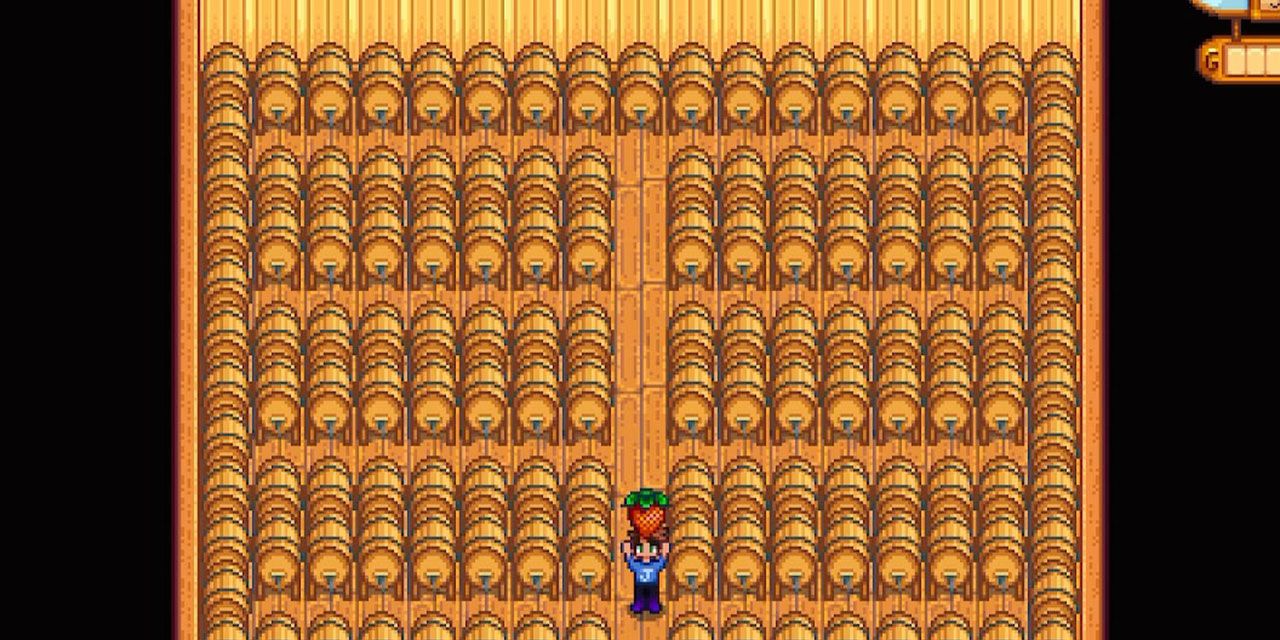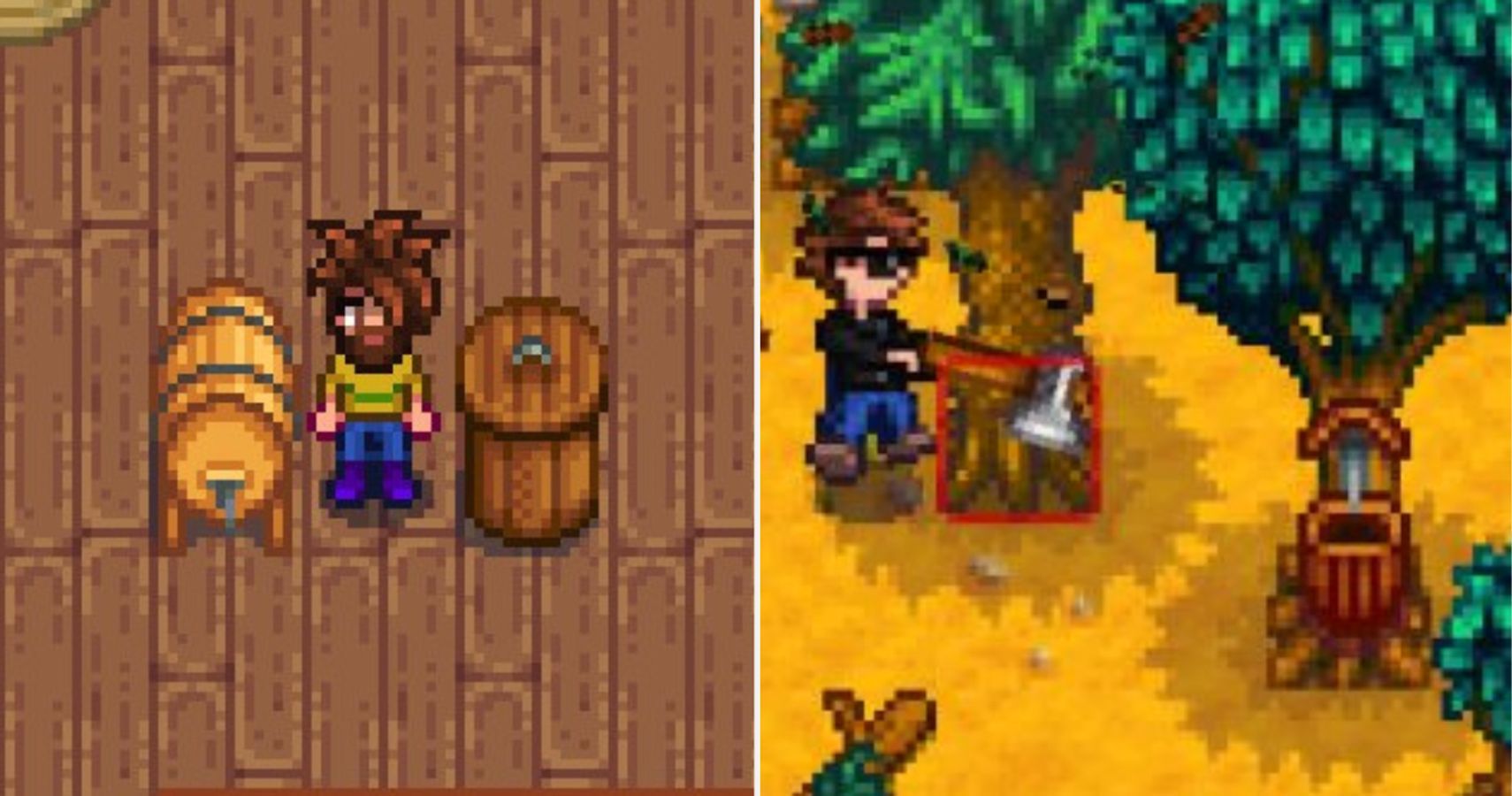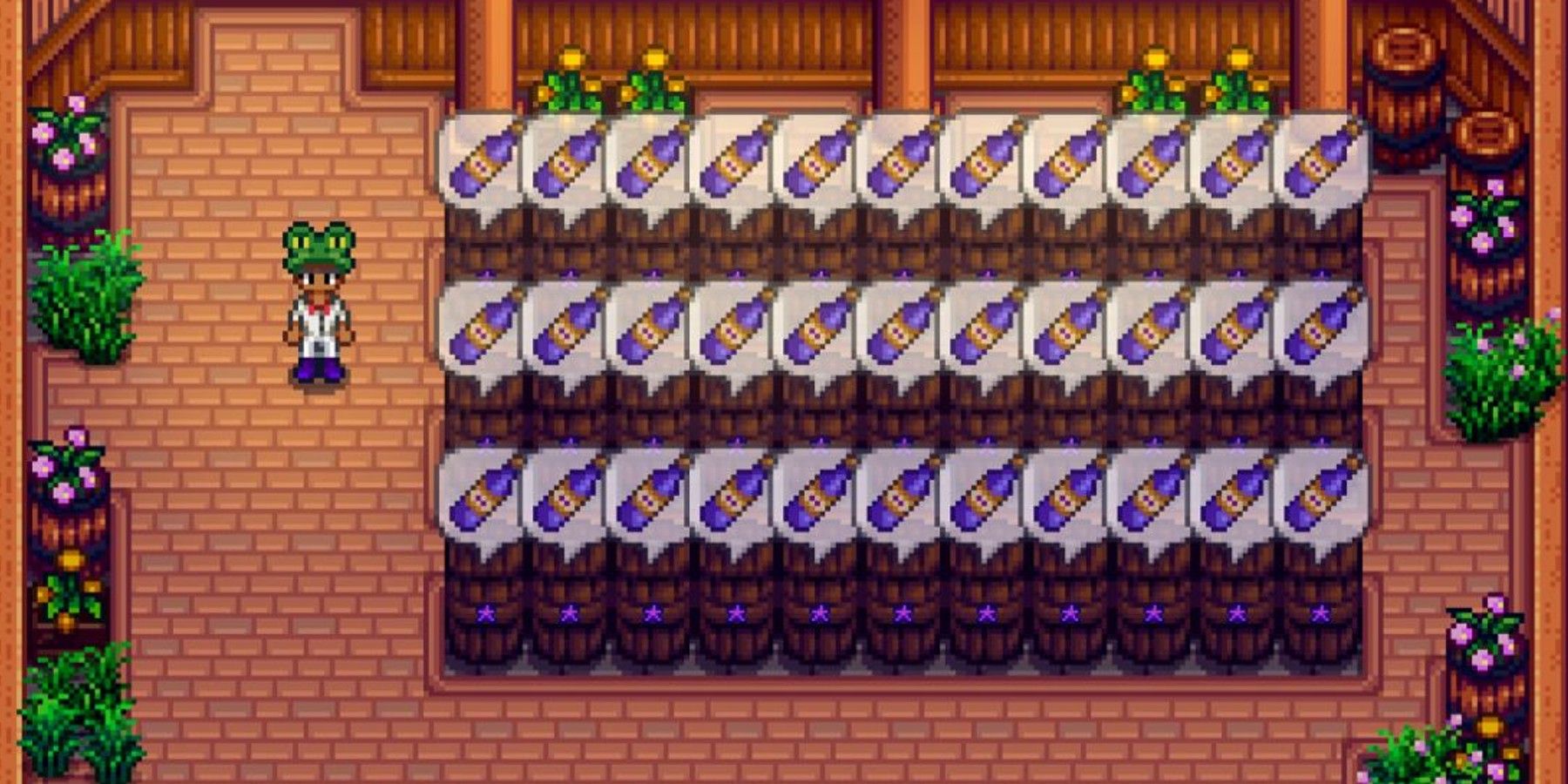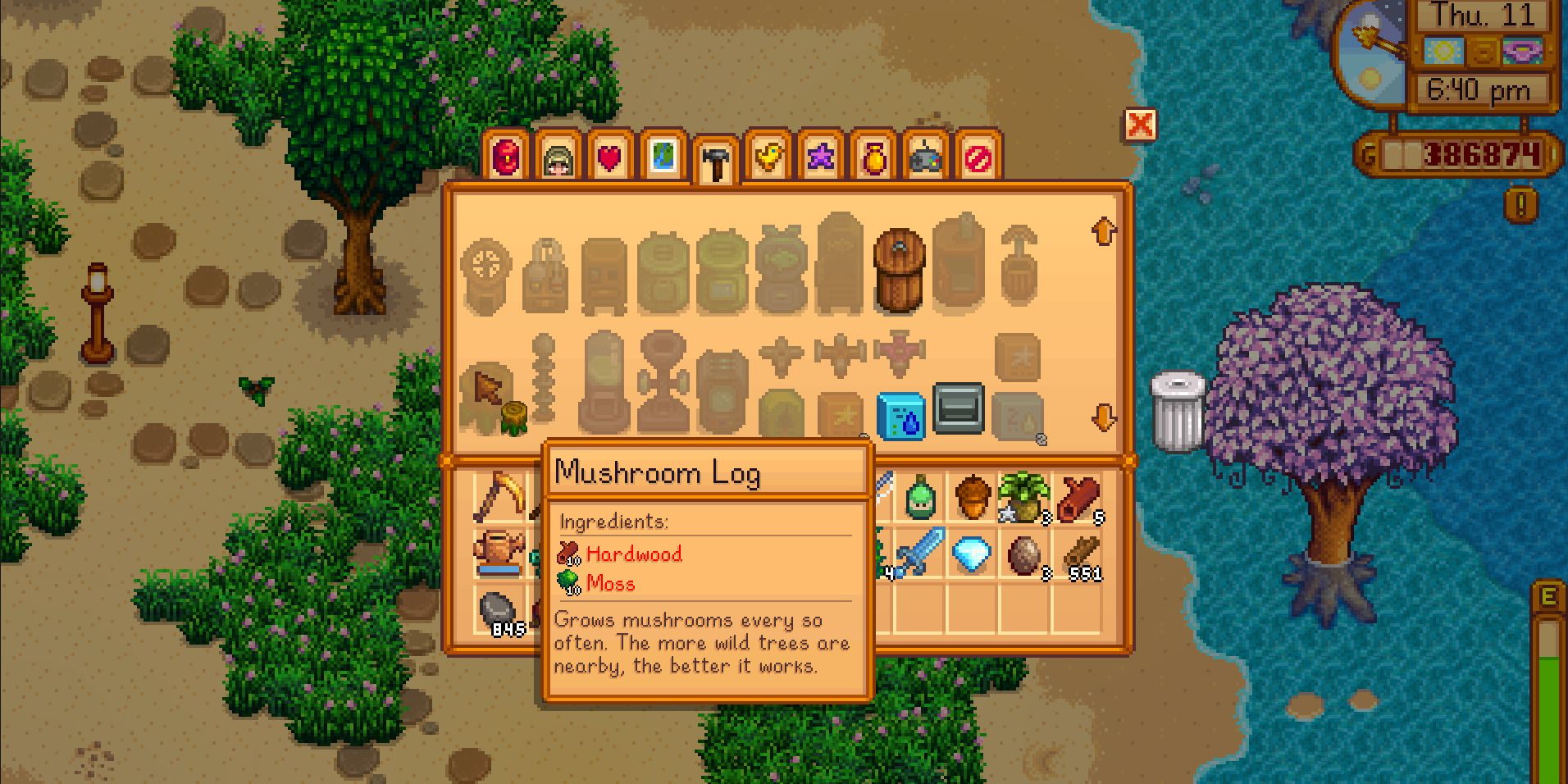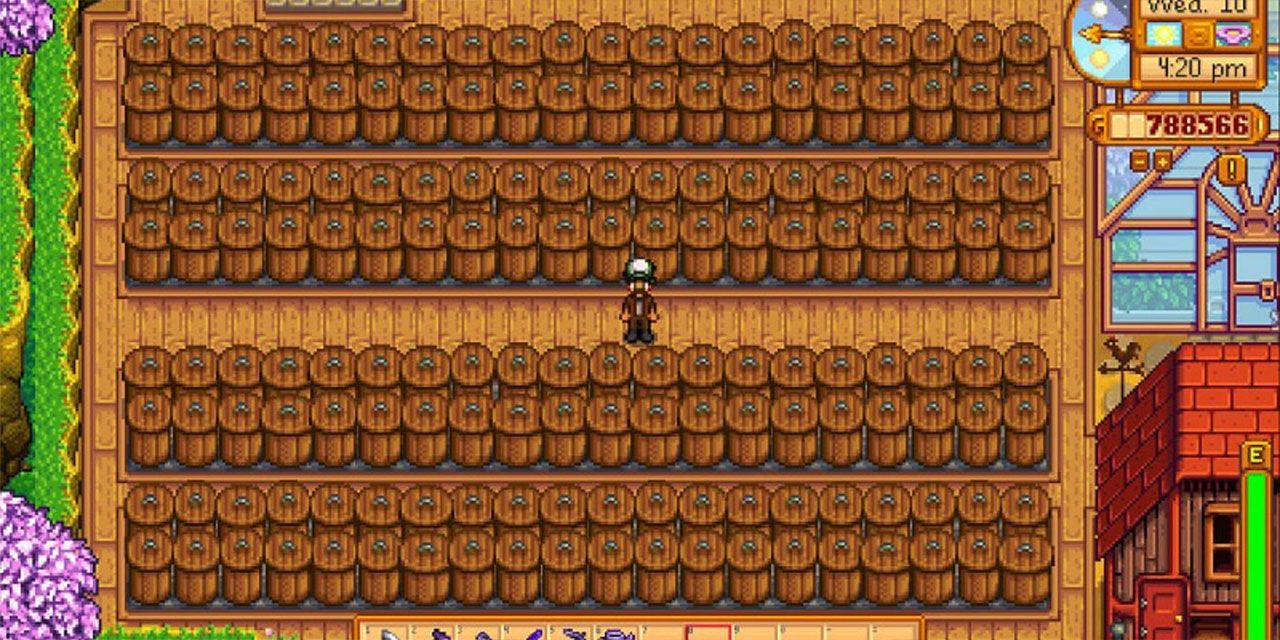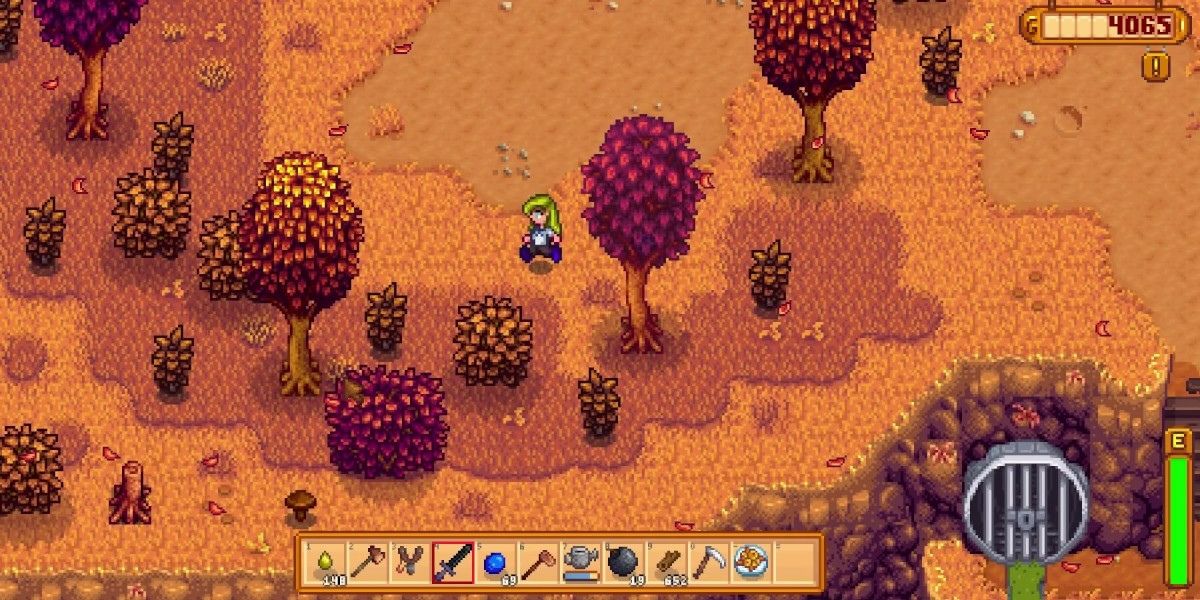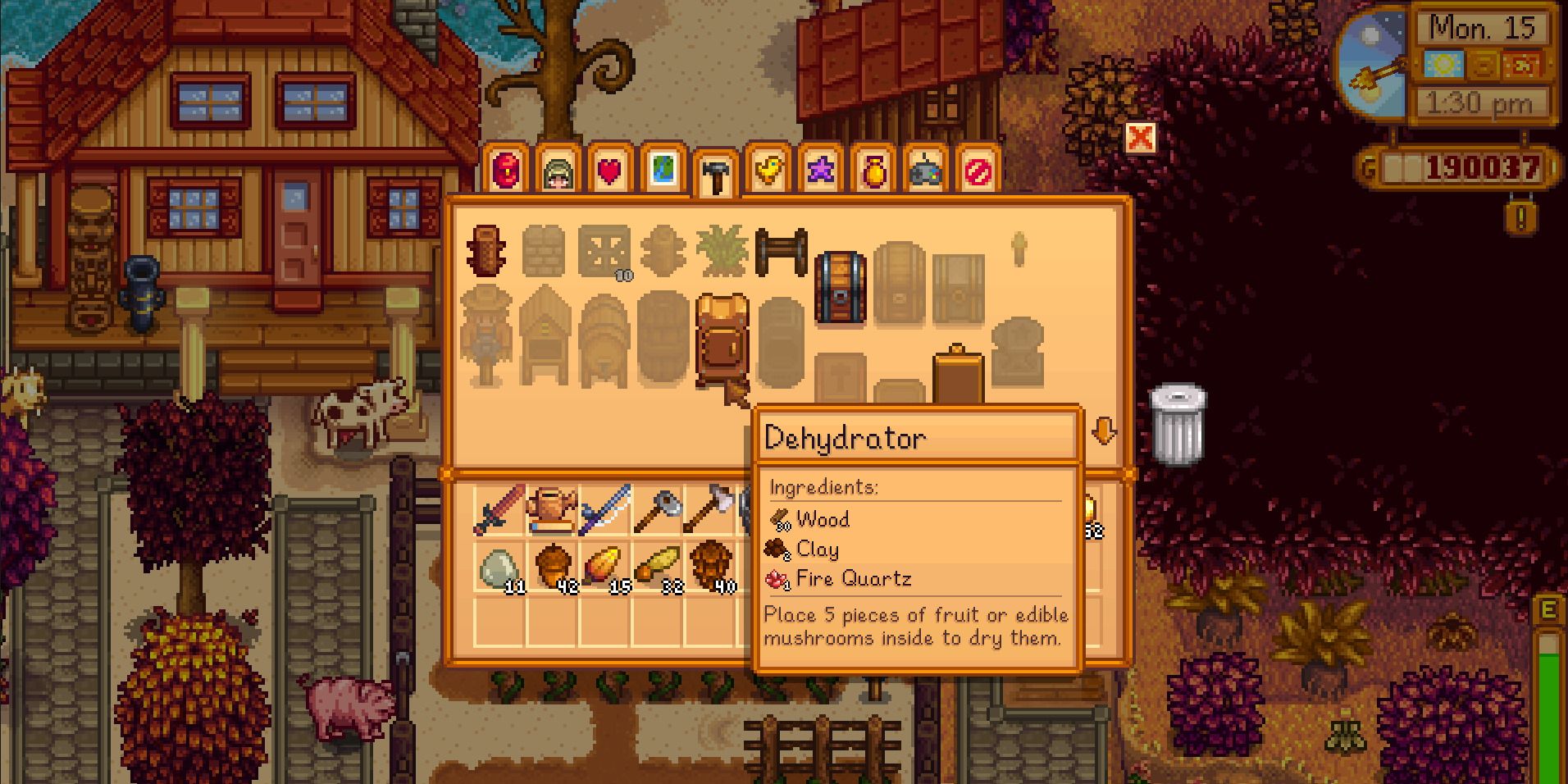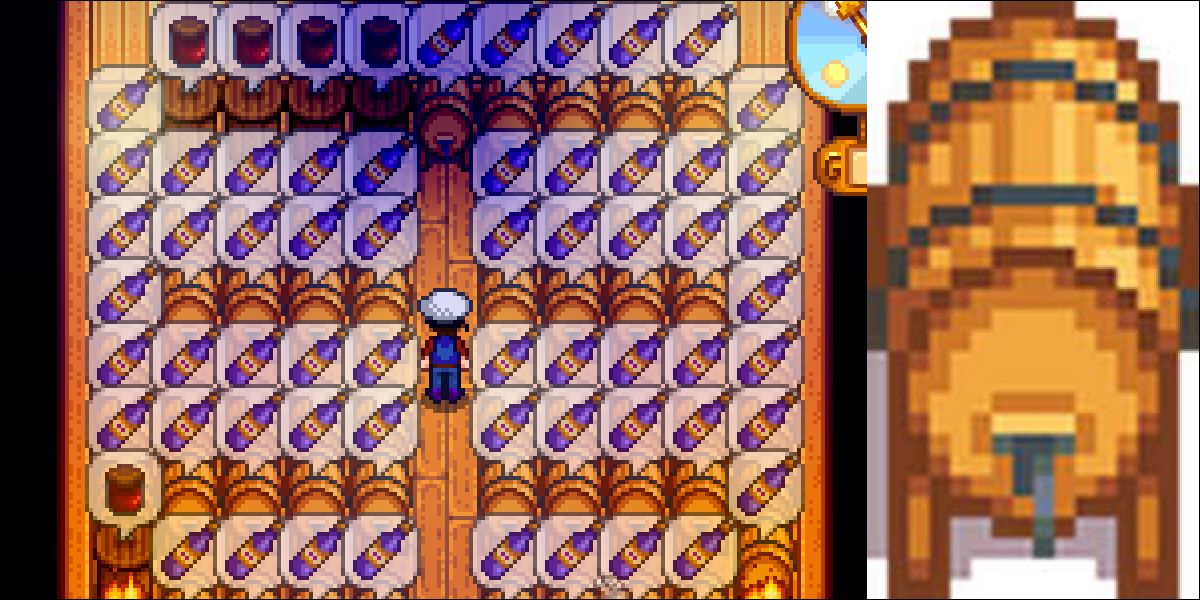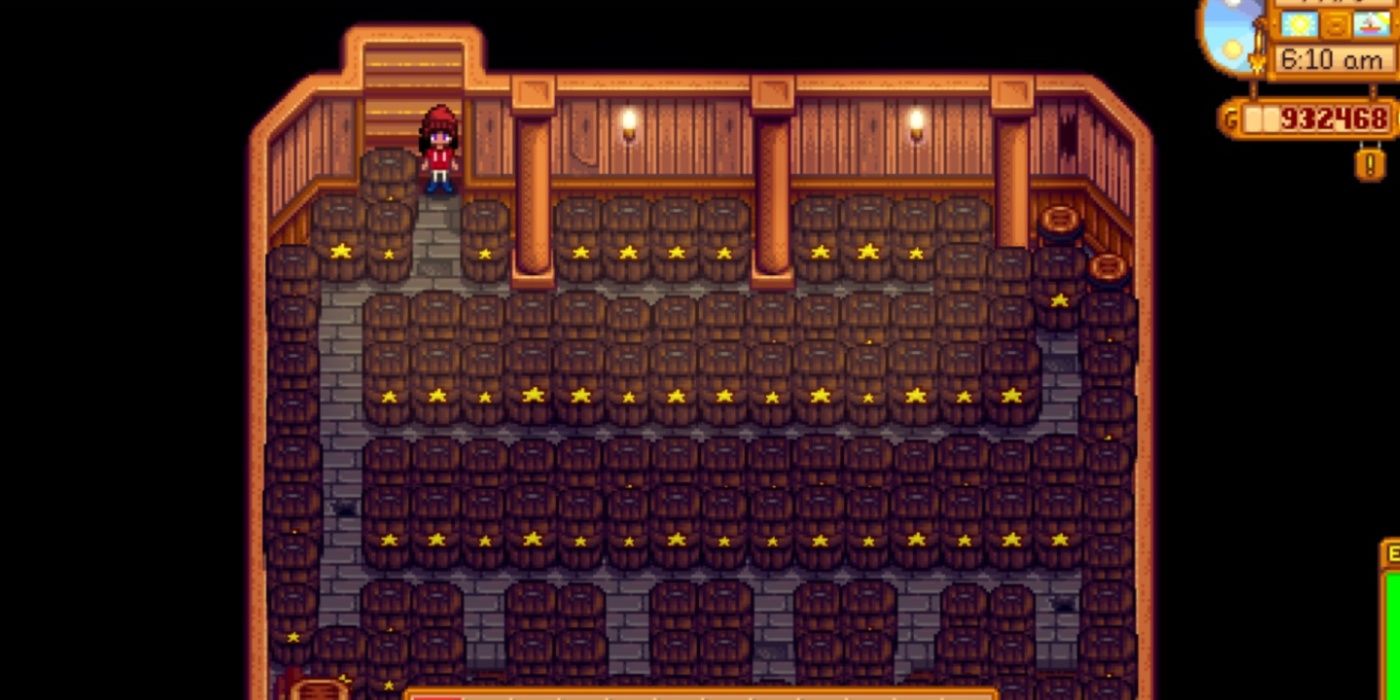Highlights
- Success in Stardew Valley is all about maximizing profits with artisanal goods like kegs, preserves jars, and the new dehydrator.
- Players should build big sheds to fit plenty of artisanal makers, prioritize keg production, and invest in a cellar for aging items.
- Mushroom logs, berry-picking seasons, and strategic use of kegs, preserves jars, and dehydrators are key to becoming a wealthy farmer.
Beginners of Stardew Valley might think of this cozy little farming sim to be all about relaxation: farmers taking their time, cultivating their fields, connecting with their local community, and stopping to smell the roses. But more experienced players know that, while that is all true, Stardew Valley is also a game about profit. Building a successful farm with all its utilities is expensive.
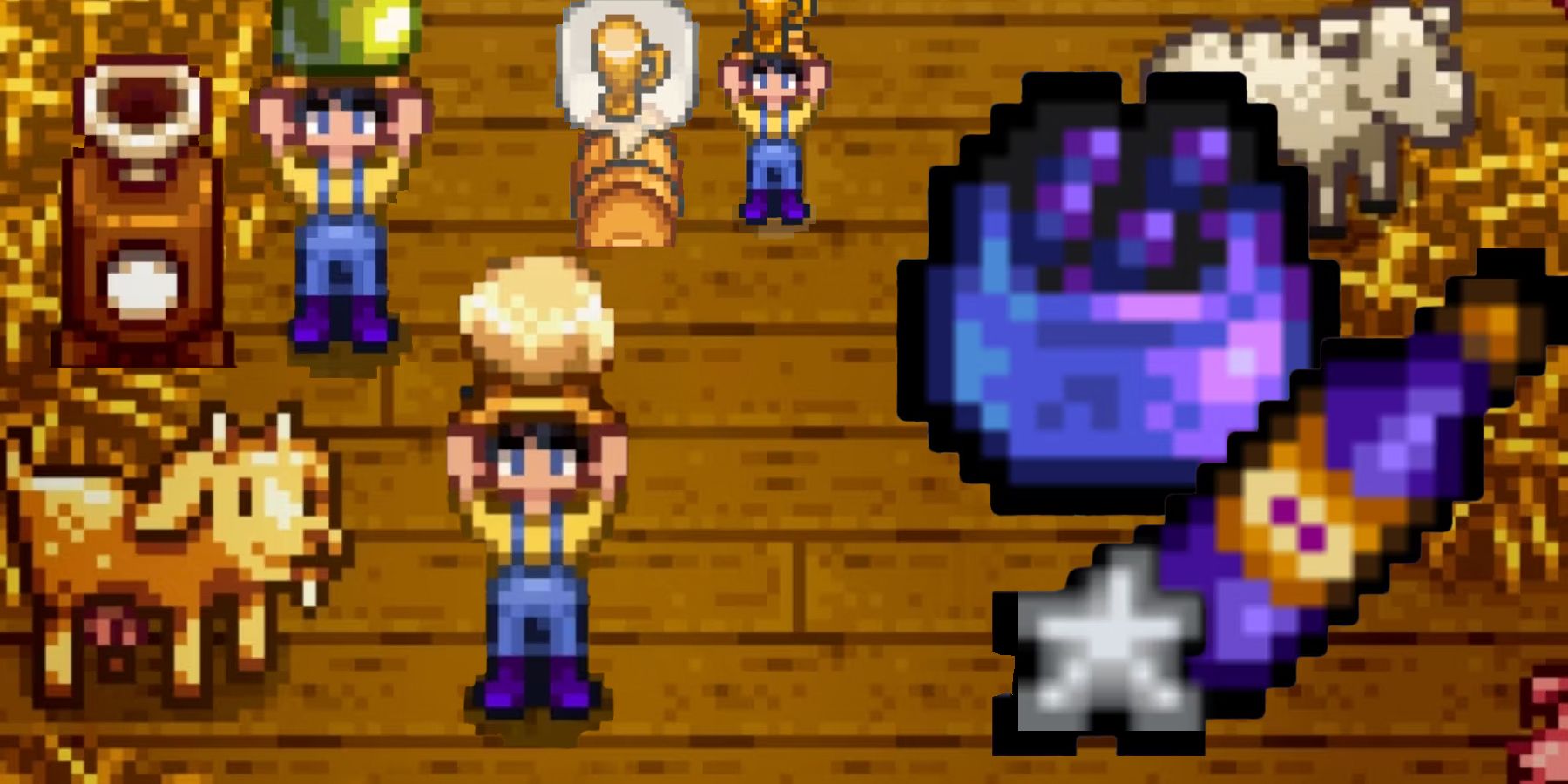
Stardew Valley: The Most Profitable Artisan Goods
Artisan goods are among the most profitable items in Stardew Valley, but focusing on these particular ones will make the player especially rich.
For the longest time, players knew that using kegs and preserves jars was the best way to make money, turning their delicious crops into artisanal goods. However, the recent 1.6 update introduced a new maker item, the dehydrator. With that, the artisanal goods game has changed forever. Here’s a great strategy on how to maximize profits with the dehydrator thrown into the mix.
9 Build A Big Shed (Or Two)
Artisanal Makers Take Up A Lot Of Space
Managing real estate is an important part of farm planning. After all, most of the viable soil will be dedicated to growing crops. So, sheds are a great way for players to maximize their space. A Big Shed only takes up 7×3 spaces outside but is way bigger on the inside. At 17×12 spaces, an optimally laid-out Big Shed can hold a maximum of 137 makers.
Starting out with one Big Shed to fit everything is fine. Kegs can go on one side, preserves jars on the other, and the dehydrators along the southern wall. However, two sheds are preferable for all the artisanal goods players will make.
8 Craft Makers
Lots of Kegs, Few Dehydrators
Now, it’s time to start crafting, keeping priorities in mind. Preserves jars and kegs should be made in equal amounts, but kegs are generally more profitable. If resources are tight, focus on kegs first and foremost. It’ll all even out eventually.
Dehydrators are way more profitable than kegs, but since they work much faster (and use up way more crops), players won’t actually need very many. Thinking about how much each maker will be used will help determine how many of them to make. Keep the ratio of kegs to preserves jars the same, with just a sprinkle of dehydrators thrown in.
7 Fill The Cellar With Casks
Kegs Still Have Their Place In This World
Dehydrators have become the true money-makers in Stardew Valley, but that doesn’t mean kegs have gone completely out of fashion. Alcohol and cheese are still the only items that can be aged in casks, raising their value to iridium star quality.
So, players still ought to invest in upgrading their houses to include a cellar and filling it with casks. The cellar comes with 33 casks already, but an optimal layout can hold as many as 125.
6 Place Down Mushroom Logs
Grow More Spores
The introduction of dehydrators has given new value to mushrooms. Alongside fruits, these fungi can also be turned into dried goods to sell for massive profit. That’s why the 1.6 update also included mushroom logs, which produce bunches of shrooms every couple of days.
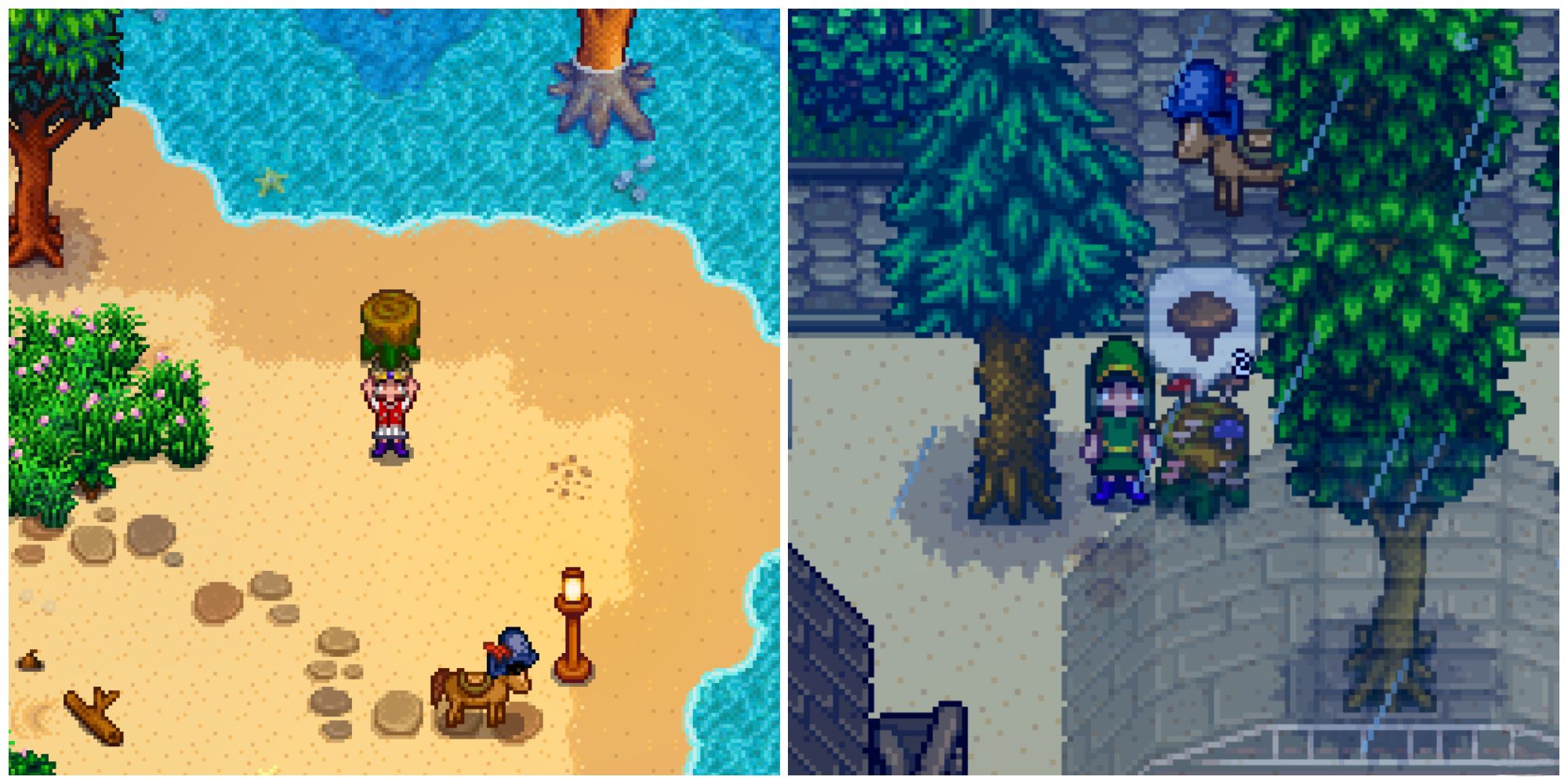
Stardew Valley: How to Get & Use Mushroom Log
Mushrooms Logs are a great new resource in Stardew Valley. Check out this guide to find out how you can create your own and obtain more mushrooms.
Mushroom logs work faster when placed near lots of mossy trees, so it pays to have a dedicated mushroom forest somewhere on the farm. Besides, if all the dehydrators are busy with mushrooms, that means more fruit can go into kegs.
5 Collect The Goods
And Know Which Makers To Use For Them
Artisanal makers generally take four different item types: fruit, vegetables, honey, and mushrooms. Fans of Stardew Valley have done a lot of math to figure out which items are the most profitable to place in kegs vs. preserves jars, but here’s the general rule of thumb:
- Kegs: fruit and honey
- Preserves Jars: vegetables
- Dehydrators: mushrooms and fruit (5 at a time)
Keep a Big Chest or two inside or near the Big Sheds to hold all these items until it’s time to use them. This is especially important for Dehydrators since players will need five of whatever fruit/mushroom they want to dry at a time.
4 Capitalize on Berry-Picking Seasons
Nothing Like Some Dried Salmonberries and Blackberries
Twice a year, the various bushes around town will be laden with fresh berries, waiting to be picked. From Spring 15-18, it’s Salmonberries, and from Fall 8-11, it’s Blackberries. Usually, these berries aren’t worth very much, even when sold in large quantities and with Bear’s Knowledge tripling their selling price.
However, when using dehydrators, large quantities are perfect. It can take time to load up on regular fruit in increments of five, but during berry-picking season, it’s a cinch! So load up on dozens of berries, and start churning out plenty of goods!
3 Dried Fruit First, Dry Wine Later
Dehydrators > Kegs
Never mind preserves jars for now. They’re off doing their own thing, turning all the vegetables into delicious pickles. The real competition of who gets what fruit is between the dehydrators and kegs.
As mentioned previously, dehydrators are faster and more profitable, but they need more fruit. So, after any harvest, use the majority of the haul on dehydrators first. Anything left over can be placed in kegs for wine. Rarer items like Cactus Fruit or Coconuts should also go into kegs because they make the best wine (more on that later).
2 Keep Kegs Wine-Only
No Hops, No Beer, No Coffee
Technically, there are other items that can go into kegs than just regular fruit to make wine. Hops create Pale Ale. Wheat turns into Beer, and 5 Coffee Beans turn into, well, coffee. However, these beverages aren’t nearly as profitable as wine, even before aging them in casks. So try to avoid processing these crops whenever possible.
Turning Honey into Mead is the only exception to this rule. For starters, kegs are the only way to make Honey more profitable. And second, they’re a good way to keep the kegs busy if there’s not enough fruit to go around.
1 Only Age The Finest Wine And Cheese
Casks Are A Major Time Sink
Dried goods from the dehydrator can be sold right away. But with wine, their true value can only be unlocked through casks. That being said, aging goods in the wine cellar takes upwards of four whole weeks (2 in-game seasons). So, once again, priorities need to be kept in order.
With all the wine and cheese a farm can produce, players should save the best ones to use first on their limited number of casks. Goat cheese is far better than regular cheese. As far as wine goes, the top sellers are the ones made from the following:
- Cactus Fruit
- Coconut
- Ancient Fruit
- Starfruit
- Pineapple
- Melon
Players keeping this in mind will soon have the greatest winery in all of Pelican Town.
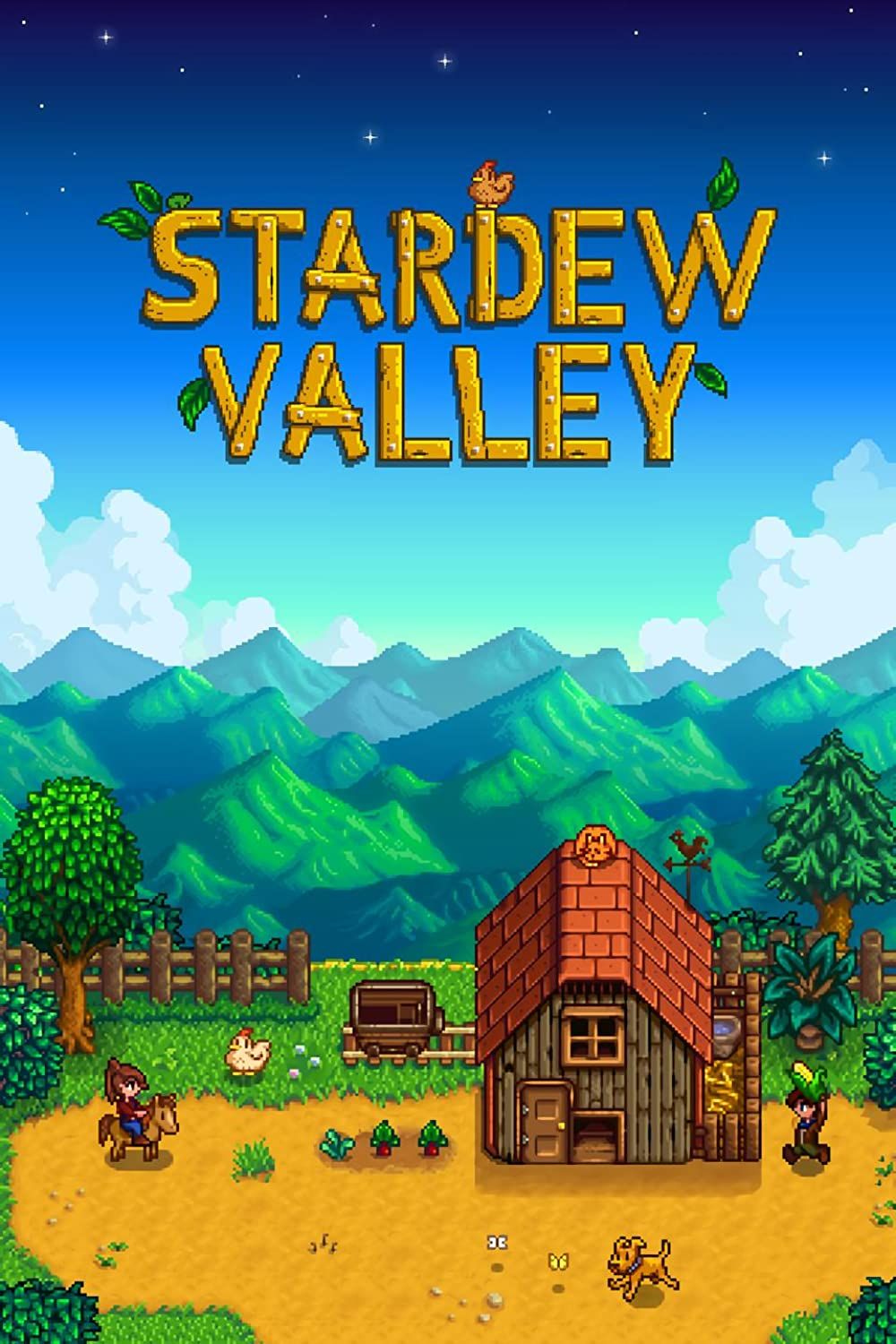
Stardew Valley
- Released
- February 26, 2016
- Genre(s)
- RPG , Simulation
- Developer(s)
- ConcernedApe


